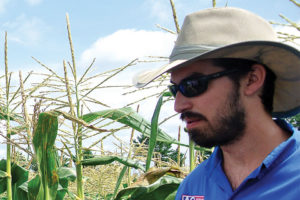Different Ways Vegetable Breeders Embrace Seed Diversity
Vegetable plant breeders have a lot of options when it comes to developing new varieties — disease resistance, faster production windows, earlier seasons, taste, size and shape of the vegetable, and many other options.
But some breeders also keep a bigger-picture view of the need for diverse genetics.
Here are two such breeders, who approach diversity in different ways, one focusing on consumer experiences, the other on genetic flexibility.

Patty Buskirk, Seeds by Design
Patty Buskirk, Seeds By Design
Crop: Multiple specialty lines
Buskirk is focused on the end user with her breeding, resulting in a diverse array of niche crops.
“I want to continue to offer our customers unique and flavorful vegetable varieties for the expanding foodie craze,” she says. “The younger generations are very food oriented and demand variety, even in their dining, eating, and gardening ventures.”
Hybrid heirloom tomatoes are a great example of a product for this market trend, she says.
She feels passionately about the role young consumers play for the industry.
“Even seed businesses need to keep their offerings fresh and relevant. As a mother of 38-, 25-, and 22-year-old daughters, I feel connected to this youthful purchasing trend. My girls buy goods and products differently than my generation,” she says.

Kyle Shelton, Abbott & Cobb
Kyle Shelton, Abbott & Cobb
Crop: Sweet corn
Shelton says he and other breeders at Abbott & Cobb value genetic diversity.
“Having a wide range of constantly evolving germplasm allows us to … develop a specific varietal program catered toward any market worldwide,” he says.
Another advantage of that genetic diversity is that it allows him to breed disease resistance into his sweet corn.
“Although it may be slower in development, natural resistance is longer-lasting and more environmentally friendly than simple genetic modifications. Developing a higher level of natural resistance is, to us, the most effective way of combating the constantly evolving pest and disease challenges that all plant breeders face.”









